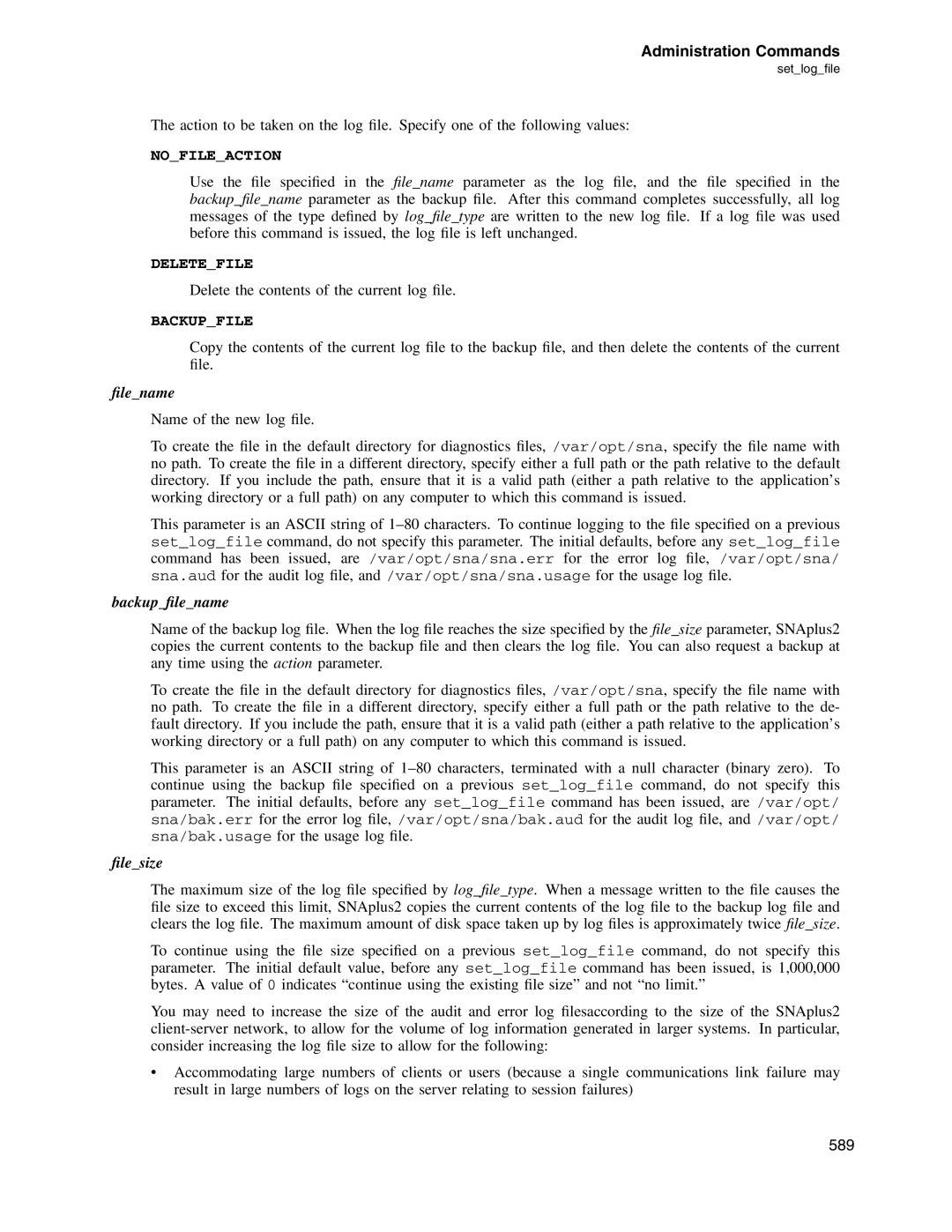Administration Commands
set_log_file
The action to be taken on the log file. Specify one of the following values:
NO_FILE_ACTION
Use the file specified in the file_name parameter as the log file, and the file specified in the backup_file_name parameter as the backup file. After this command completes successfully, all log messages of the type defined by log_file_type are written to the new log file. If a log file was used before this command is issued, the log file is left unchanged.
DELETE_FILE
Delete the contents of the current log file.
BACKUP_FILE
Copy the contents of the current log file to the backup file, and then delete the contents of the current file.
file_name
Name of the new log file.
To create the file in the default directory for diagnostics files, /var/opt/sna, specify the file name with no path. To create the file in a different directory, specify either a full path or the path relative to the default directory. If you include the path, ensure that it is a valid path (either a path relative to the application’s working directory or a full path) on any computer to which this command is issued.
This parameter is an ASCII string of
backup_file_name
Name of the backup log file. When the log file reaches the size specified by the file_size parameter, SNAplus2 copies the current contents to the backup file and then clears the log file. You can also request a backup at any time using the action parameter.
To create the file in the default directory for diagnostics files, /var/opt/sna, specify the file name with no path. To create the file in a different directory, specify either a full path or the path relative to the de- fault directory. If you include the path, ensure that it is a valid path (either a path relative to the application’s working directory or a full path) on any computer to which this command is issued.
This parameter is an ASCII string of
file_size
The maximum size of the log file specified by log_file_type. When a message written to the file causes the file size to exceed this limit, SNAplus2 copies the current contents of the log file to the backup log file and clears the log file. The maximum amount of disk space taken up by log files is approximately twice file_size.
To continue using the file size specified on a previous set_log_file command, do not specify this parameter. The initial default value, before any set_log_file command has been issued, is 1,000,000 bytes. A value of 0 indicates “continue using the existing file size” and not “no limit.”
You may need to increase the size of the audit and error log filesaccording to the size of the SNAplus2
•Accommodating large numbers of clients or users (because a single communications link failure may result in large numbers of logs on the server relating to session failures)
589
